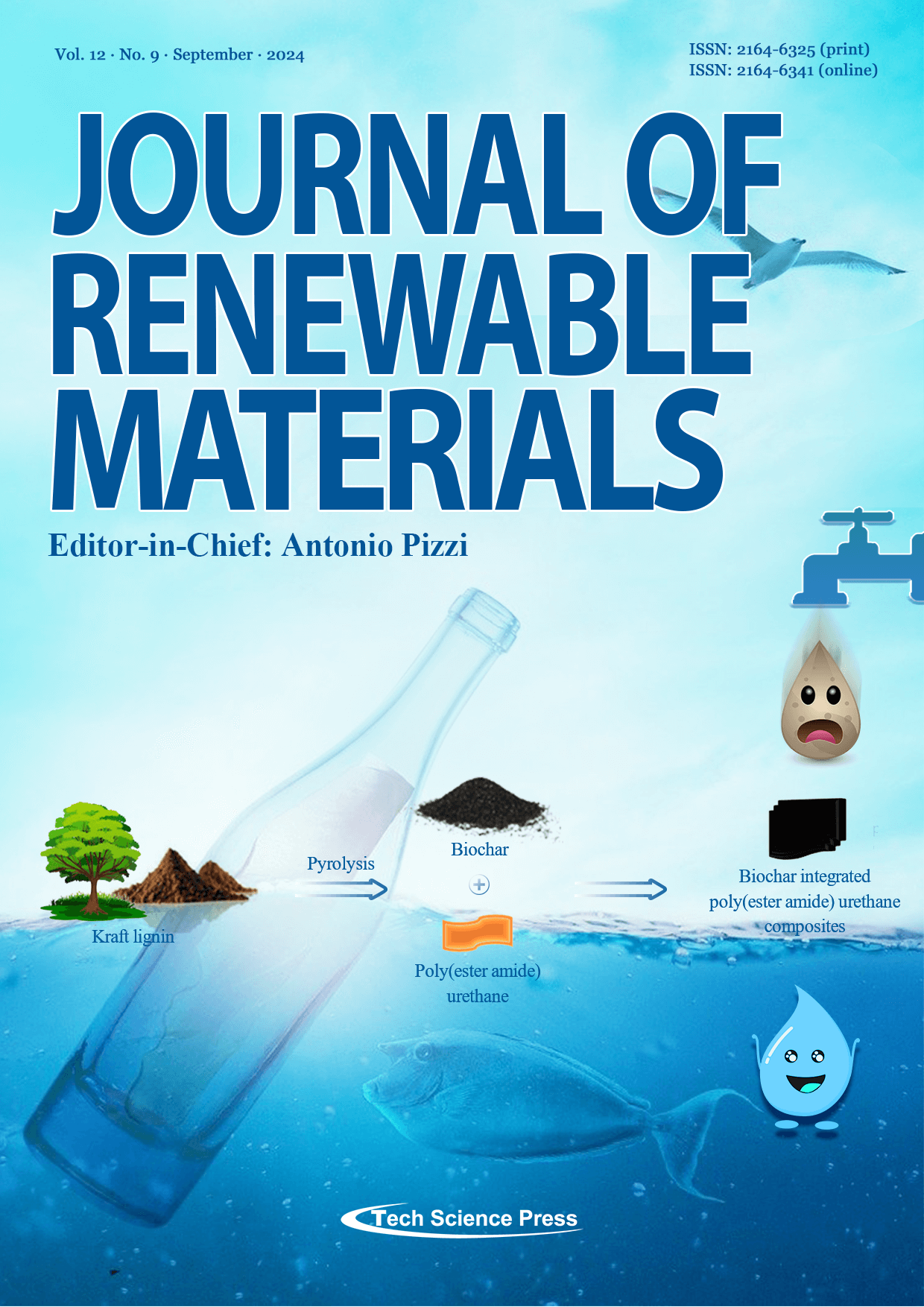Potential of Bamboo Species Guadua trinii and Guadua angustifolia for Nanocellulose Production
Agatha E. R. Prado Gárate1,2, Fernando E. Felissia2, María Cristina Area2, Teresa Suirezs3, María Evangelina Vallejos2,*
Journal of Renewable Materials, Vol.12, No.9, pp. 1541-1555, 2024, DOI:10.32604/jrm.2024.052481
- 25 September 2024
Abstract Non-traditional lignocellulosic materials are a significant resource for producing high-value products, including nanocellulose. This work studied the nanocellulose obtention from chemical pulps of the two fast-growing bamboo species, Guadua trinii, and Guadua angustifolia. Chemical pulps were produced by soda-anthraquinone (S) pulping from both autohydrolysis-pretreated (H) and unpretreated bamboo chips. Autohydrolysis-pretreated (SHP) and unpretreated soda-anthraquinone (AQ) (SP) pulps were characterized by yield, Kappa number, alpha, beta, and gamma cellulose, degree of polymerization, water retention value, and crystallinity. The nanocellulose was produced by a sequential chemical oxidation treatment (2,2,6,6-tetramethylpiperidine-1-oxyl, TEMPO reagent) and mechanical nanofibrillation. Nanocellulose was characterized by carboxylic… More >
Graphic Abstract
